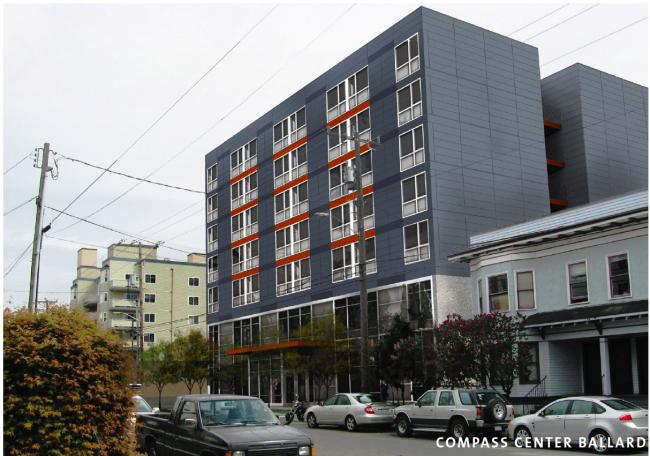City approves Urness House design, environmental impact
The city decided in favor of the design and the environmental impact of Compass Housing Alliance's Urness House, clearing the way for its construction.
Tue, 10/05/2010
On Oct. 4, the city gave approval to the Compass Housing Alliance to move forward on Ballard's Urness House, with conditions, in terms of the design and environmental impacts of the housing development for formerly homeless men and women.
The project, located at 1753 N.W. 56th St., is a seven-story building containing 80 low-income housing units above first and second-floor office and medical space. The project includes 13 parking spaces within the building.
According to the City of Seattle Analysis and Recommendation of the Director of the Department of Planning and Development, heretofore referred to as the Notice of Decision, the design of the Urness House was approved based on the unanimous recommendation of the five members of the Northwest Design Review Board, with the five following conditions:
- Integrate architectural details at ground level that reference Ballard's history or character, including possible use of the Urness style of textile design or other Scandinavian or Nordic cultural references.
- Adjust the planting strip to allow better pedestrian access between the sidewalk and the curb.
- Install a seat wall at the entry area.
- If additional bicycle parking is needed, locate it at the front of the building.
- Use mirrors or other traffic indicators to promote safety of vehicles and pedestrians inside the garage and at its entry.
The Urness House project was given a determination of nonsignificance under the State Environmental Policy Act because the proposal will not have a significant impact on the surrounding environment, according to the Notice of Decision.
An increase in traffic and too little parking were potential problems brought up by the public during the design review and environmental analysis of Urness House.
According to the Notice of Decision, the Department of Transportation had a Trip Generation and Parking Assessment Memorandum created by the Transpo Group Sept. 3.
According to that memorandum, the development will create 11 new trips to the site in the morning peak hours and 12 new trips during the evening peak hours. This increase is characterized as minimal.
Residents of Urness House are not expected to own their own vehicles, so all parking demand for the project will come from the commercial uses of the building, according to the memorandum. The 13 parking spaces are adequate to accommodate that use, according the the memorandum.
The conditions placed on the determination of nonsignificance by the city include a notice of the income restriction of Urness House residents in order to maintain the reduced parking for the project.
For more information on the city's decisions, click here and here. Appeals of these decisions can be made to the city's Hearing Examiner no later than Oct. 18.


